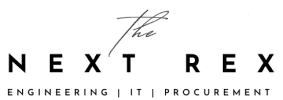If there is any regret in 2017, that is, memory is faster than house prices, wages did not rise much; house did not buy into, and soon the chicken can not afford to eat.
This is not a joke. The PlayBattle Grounds, which is popular in the world, is a $ 899 memory, and now a Samsung 8GB DDR4 memory is priced at $ 699. The top effect of playing top-level screen, that 32GB memory is essential, light memory would have to spend 3000 ocean – and in six months ago, an 8GB memory only 399 yuan, just six months, it doubled.
Why memory so fast, what is behind the secret?
In the 1990s, under the leadership of Intel CEO Andy Grove and Microsoft CEO Bill Gates, the two companies set up the “Wintel Alliance”, Intel provides a powerful performance for Microsoft Processor, and Microsoft is constantly upgrading the Windows system to squeeze the processor performance. At that time the popular argument is:
Until today, this law is still actively play a role: why an upgrade to the latest system, the first two years of the old iPhone card to not? Because the new iOS system needs more robust performance support, and the old iPhone configuration has been completely enough. So, every two years, you will emerge new mobile phone, the idea of a new computer.
For decades, “Andy – Bill’s Law” has been pushing the PC, the mobile phone market boom.
Can this have anything to do with memory?
The so-called memory, in fact, is a “memory” (Memory), which is made of semiconductor technology to store the data of electronic equipment, according to different nature, mainly divided into two categories:
- Volatile memory (RAM), ie memory
- Nonvolatile memory (ROM), that is, hard disk (including mechanical hard drives, solid state drives, flash memory, etc.)
In addition, solid state drives (Solid State Drive, referred to as SSD) and NAND flash memory or mobile phones, in addition to the real-time hard drive (Solid State Drive, referred to as SSD) and NAND flash memory or mobile phone, The bulk of the computer costs, belonging to nonvolatile memory.
DRAM is mainly used for computers, mobile phones, is the direct interaction with the CPU data memory, with read speed, read and write at any time and other characteristics, often as a processing system or program temporary data storage medium. Therefore, the same conditions, the two other hardware configuration is almost the same mobile phone or computer, DRAM, the faster, the faster the speed.
With the progress of systems and software, mobile phones, computers and other equipment, the greater the demand for memory.
2017 mainstream Android flagship, the basic use of 4GB RAM, some domestic mobile phone even equipped with 8GB RAM; and iPhone 8 and iPhone X are also equipped with 3GB RAM – and in 2007 iPhone has just released, the memory only 128MB.
In addition to mobile phones, cloud services, artificial intelligence, VR / AR, block chain and other technology, but also the performance of the computer made a higher demand, which also led to a disguised demand for memory.
The surge in market demand is one of the reasons for memory prices.
(IPhone 8 dismantling map, picture source: iFixit)
Industry competition: US and South Korea hegemony, monopoly of the world
Memory prices of another major reason, and the industry situation is closely related.
According to the IC Insights survey released in 2016, the world’s top 10 semiconductor manufacturers, engaged in memory and flash memory chip design and manufacturing, there are five:
- Samsung Electronics
- SK Hynix
- Intel
- Magnesium Technology
- Toshiba Semiconductor
The five companies, basically can be divided into South Korea and the United States two camps. Samsung, SK Hynix are Korean manufacturers, and Intel, Micron Technology is the US manufacturers. In addition, Toshiba Semiconductor is a Japanese factory, but has now been Bain Capital led the consortium won, behind it is Apple, Dell, SK Hynix and other companies, are basically the United States and South Korea players.
South Korea and the United States, almost monopolized the global memory market.
Samsung is the world’s largest manufacturer of DRAM, NAND flash memory, SSD solid state drives. These businesses in 2017 have made rapid growth. According to IC Insight, the NAND flash market grew 44% this year, while the DRAM market grew 74% – while Samsung’s market share in DRAM and NAND was 47.5% and 36.9%, respectively.
This is why the Galaxy Note 7 burns after the incident, Samsung can quickly recover.Because Note 7 burned the money, long earned through the semiconductor business back.
Samsung’s 2017 second quarter results show that the quarter of Samsung’s semiconductor revenue of 17.58 trillion won (about 15.49 billion US dollars), operating profit of 8.03 trillion won (about 7.216 billion US dollars), has been fast catch up with Apple 2017 Q3 Quarterly profit ($ 8.717 billion).
In fact, Samsung has become the overlord of the memory industry, that is, nearly 10 years of things, before that, the memory industry belongs to the United States and Japan.
In the 1970s, the memory industry was dominated by US companies, IBM, Texas Instruments and Intel were the biggest players. Can be the 80’s, the rise of the Japanese electronics industry, Japan’s Toshiba, NEC (Japan Electric), Hitachi and other manufacturers with strong technical advantages over the United States, Toshiba and NEC was once the world’s largest semiconductor manufacturers.
In 1999, Hitachi, NEC two Japanese companies merged into the semiconductor sector for Elpida memory company, after the merger of Mitsubishi Electric’s memory manufacturing sector. At this time the Japanese semiconductor is flourishing, no one thought the Japanese memory industry will shrink rapidly after ten years.
In 2008, the global financial crisis broke out, Japan is the hardest hit. At that time, excess memory production, the entire industry into a weak period, the memory price once fell below the cost price, the United States Magnesium, Japan and other companies are in deficit.
In 2009, Elpida was in trouble, the Japanese government once again lent a helping hand, injected 30 billion yen in public funds, and provided a government-guaranteed 100 billion yen in bank financing. However, despite the government funding and policy support, but due to limited support, Elpida’s business has never been significantly improved – at this time, with the full support of the South Korean government, Samsung, Hyundai and Hynix and other companies have escaped Robbery, rapid rise.
In January 2012, Samsung Electronics already accounted for 41% of the memory market share, while Elpida’s market share is only 13.5%. Not long before, Elpida submitted a bankruptcy protection request, then Elpida’s total debt has been as high as 481 billion yen, the Japanese manufacturing industry, the largest debt in the history of the enterprise.
May 2012, Magnesium Technology to $ 2 billion acquisition of Elpida, renamed the magnesium memory Japan.
The decline of Toshiba Semiconductor is related to the “Toshiba Accounting Scandal” that broke out in 2015. By the 2008 financial crisis, Toshiba Group profitability is weak, in order to achieve profit targets, Toshiba executives at the expense of fraud in the book. 2015, Toshiba was exposed in the past 7 years, a total of $ 1.2 billion in revenue, a direct result of the Toshiba Group restructuring.
No matter what, Toshiba had to divest their own one of the most profitable business, including medical equipment business, white goods business, semiconductor business and so on. If the Toshiba semiconductor business unit was Bain Capital led the consortium acquisition, then in the future is likely to be listed in Japan alone, can be behind the shareholders is not the Americans, that is, Koreans.
n the current demand, whether it is the United States or South Korea, are not willing to fight the price war, the parties reached a delicate balance.
Market research institutions DRAMeXchange researcher Wu Yating pointed out that the current market benefit from the average sales price rise and new processes continue to turn into the major manufacturers until the end of 2017 are not a lot of expansion plans, and the third quarter with the major mobile phone The company’s flagship product shipments, memory prices will continue to rise.
How to buy laptop memory Search WeChat public number love Fan children (micro-signal: ifanr) , back to the “memory” , access to Raiders.
2018 years, the memory will go up then?
Despite relying on the memory business, Samsung, Magnesium, Hynix and other companies earn pours, but does not mean to sit back and relax.
Memory is a very cyclical industry, vulnerable to market supply and demand situation, the lack of user stickiness. If you do not do all the preparations, it is likely to be subversive later – now, China is vigorously developing the memory business, although there is still a gap compared with the giant, but because of the national policy support, purple, Changxin , Jinhua and other entry, all the high morale, adequate forage.
Therefore, whether it is Samsung, SK Hynix, or Intel, Magnesium, are actively seeking technical breakthroughs.
Memory, Hynix, Magnesium is still seeking a breakthrough on the process, ready to jump from 25nm to 20nm or less. To this end, Magnesium and Hynix in Taiwan and mainland China set up a new plant, and increase investment.
While Samsung, Intel and other technology more leading players, in the study of alternative DRAM new memory:
- MRAM, Magnetoresist Random Access Memory (Magnetoresistive Random Access Memory), the main players are Samsung and TSMC, this memory longer life, chip area smaller, faster response, so the industry as the most likely to replace DRAM technology
- RRAM, Resistive random-access memory, Intel and Magnesium jointly developed “3D Xpoint” is like this, writing speed than NAND flash memory ten thousand times faster than DRAM 10 times
The industry is expected, probably to 2019, the memory market will usher in a wave of price cuts.
As for flash memory, the entire industry is moving from 2D flat NAND flash to 3D stereo NAND flash memory.
At present, Samsung is still the leader in this area, 3D-NAND monthly production capacity has reached 40%, while Intel, magnesium followed, as for Toshiba, Western Digital 3D-NAND production capacity, accounting for only 10- 15%.
However, due to the demand for NAND flash memory is not as strong as the memory, research institutions DRAMeXchange expected, with the increase in Toshiba’s production capacity, 2018 market will be oversupply situation.
On the whole, the next six months, whether it is memory or flash memory, should continue to price – that is, mobile phones, computers and other electronic products, the price will go all the way higher. Memory in the end when will stop skyrocketing? Perhaps only waiting for the next spoiler admission.

